Each step of the transition will slowly progress an adult cat to a raw diet. The first step of the raw feeding transition includes simple ingredients so as not to overwhelm the pet parent and the cat during the switch of processed food to fresh food.
Feeding simple meals is encouraged when beginning the raw feeding transition for cats. It is best to avoid adding too many new ingredients to the diet in the beginning.
Lean White Meat Proteins
Select lean, white meat proteins to feed as muscle meat.
Lean Raw Meaty Bones
Edible bone is needed in step one. It is best to select raw meaty bones from a lean, white protein.
Whole Food for B Vitamins
The addition of Nutritional Yeast is highly recommended to increase B vitamins.
Avoid rushing the transition process. It is normal to get excited and want to push forward. However, it is best to allow the cat to set the pace of the raw transition. Some cats take effortlessly to raw while others need more time.

The Beginning of the Raw Transition
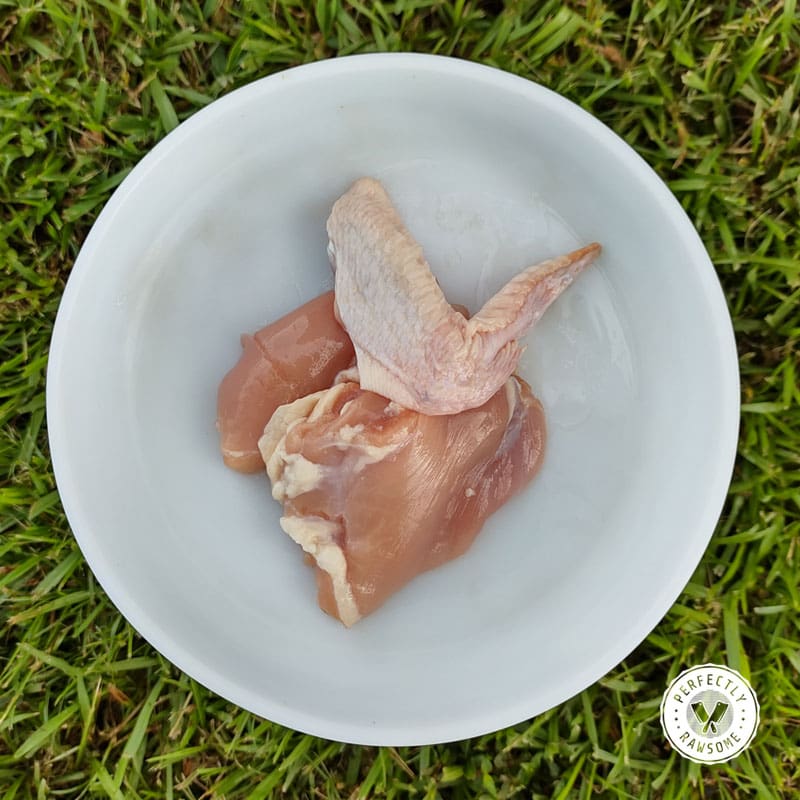
Meal Example 1
Chicken Thigh, boneless
Chicken Wingette + Tip
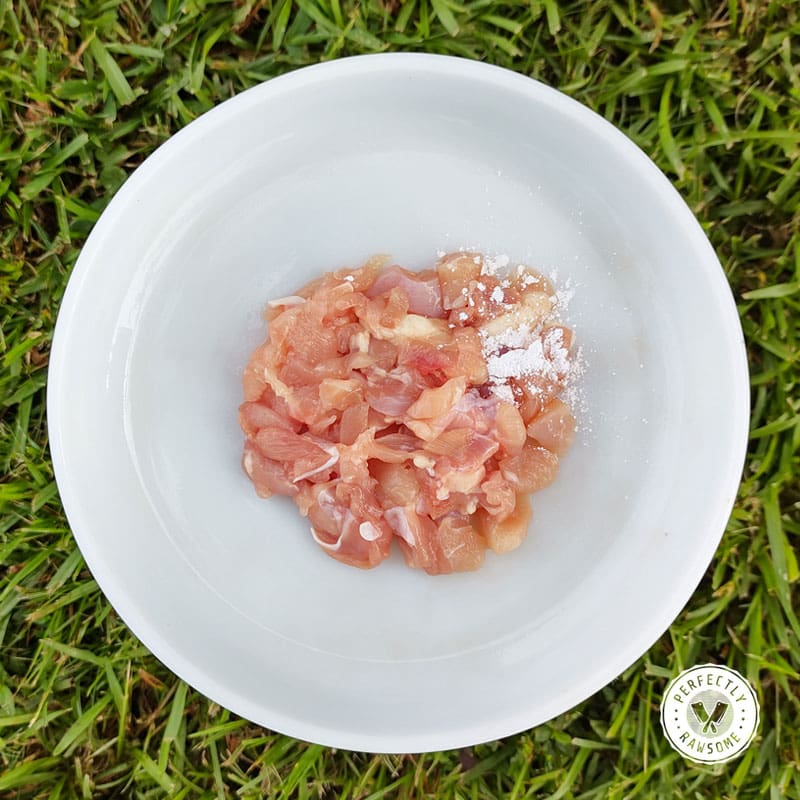
Meal Example 2
Diced Chicken Thighs
Calcium Supplement
The purpose of feeding lean white meat and raw meaty bones is to provide a bland meal. Bland meals are easier on digestion and allow the cat to adjust to digesting raw proteins and fat.
Additionally, each transition step is beneficial to the pet parent. There is a learning curve with raw feeding. The transition plan is ideal to help the pet parent adjust and learn a new way of providing a nutritionally balanced diet to their cat.
Lean White Muscle Meat Options
White muscle meat is the main source of protein in step one. Red meat protein and organs are only added once the cat has adjusted to lean white meat. Meals from lean, white meat allow the cat’s digestive system to adjust to raw proteins and fats. Too many new foods may cause diarrhea and digestive upset.
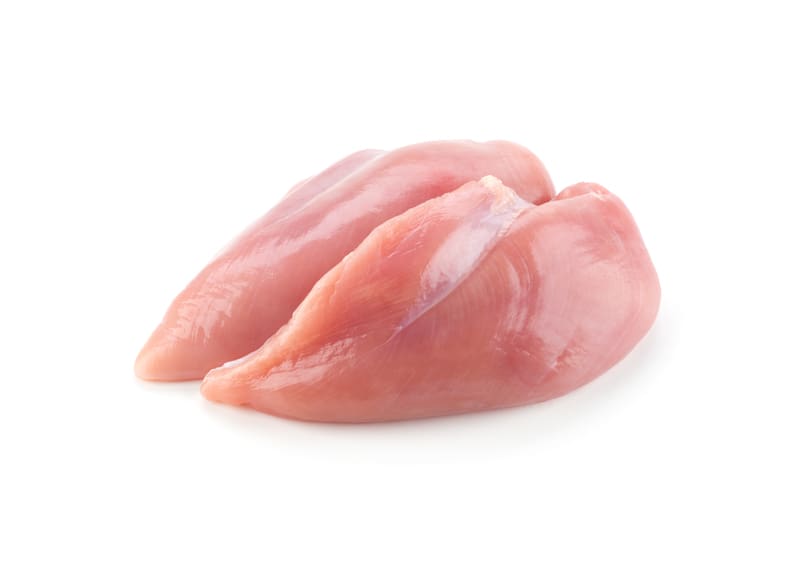
Boneless Chicken Muscle Meat
Chicken is the recommended starter protein when transitioning a cat to raw. Boneless and skinless chicken muscle meat from breasts or thighs are good options to provide low-fat protein.
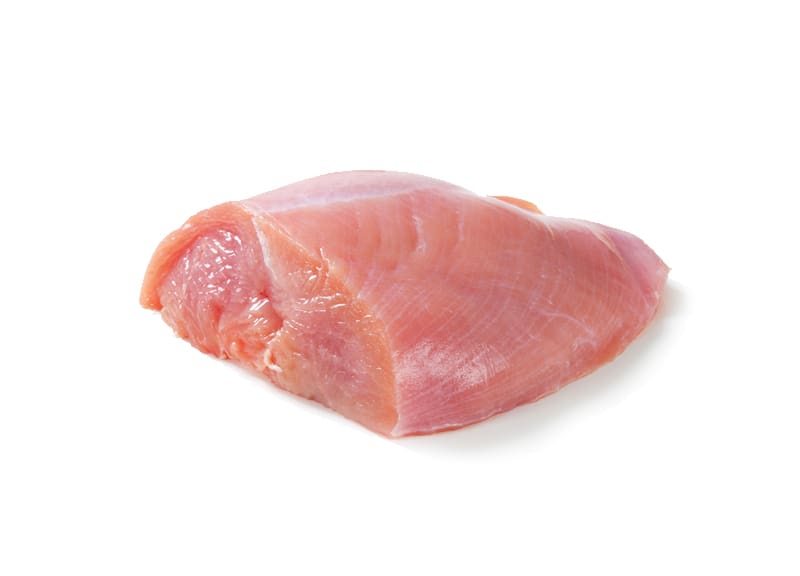
Boneless Turkey Muscle Meat
Turkey is another lean white meat similar to chicken, and is useful for cats who are sensitive to chicken. Boneless turkey breasts or thighs are good options to use for the muscle meat ratio in step one.
Poultry Intolerances & Allergies
Some cats cannot consume chicken or turkey due to an allergy or intolerance. Therefore, these proteins should be avoided. In these instances, lean pork muscle meat is an appropriate alternative to start the transition..
Raw Meaty Bone Options
Raw meaty bones (RMB) should be included in the first step of the transition. It is best to select raw meaty bones that are appropriate for the cat’s size.
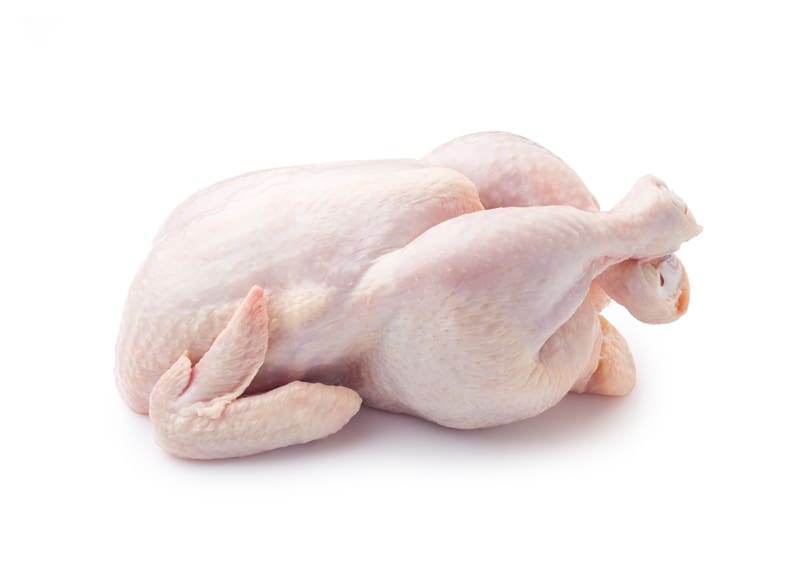
Cornish Hen RMBs
Cornish Hens are a small species of chicken that yield raw meaty bones suitable for cats. All of the bones in a cornish hen can be fed to cats. The bone percentages from chicken raw meaty bones can be used when calculating the weight of cornish hen to feed in a meal.
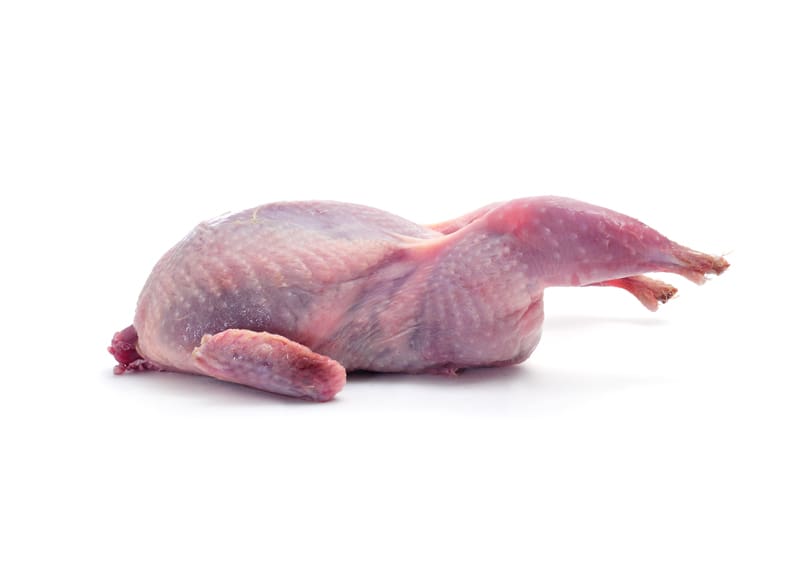
Quail RMBs
Quail are one of the smallest species of poultry that provide raw meaty bones suitable for cats. All of the bones in quail can be fed to cats. The bone percentages from chicken raw meaty bones can also be used when calculating the weight of quail to feed in a meal.
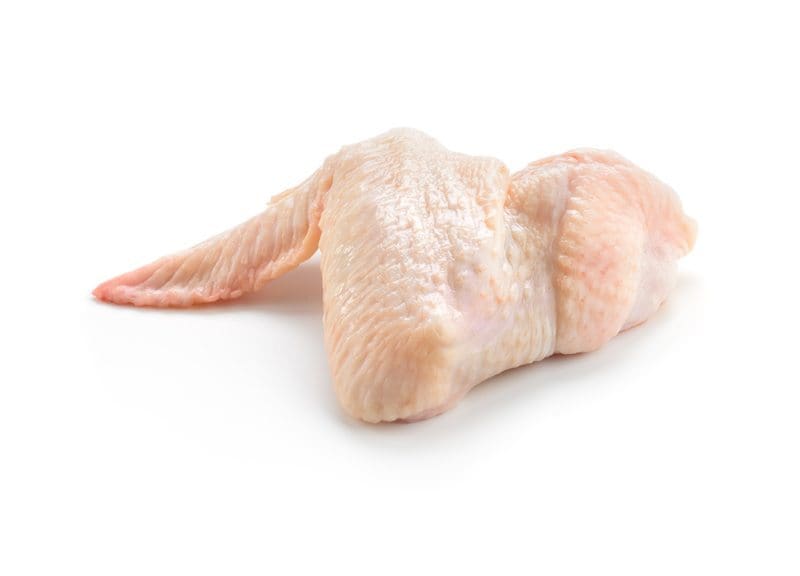
Chicken RMBs
Chickens provide a few raw meaty bones suitable for cats. The wing flat (wingette) and the wing tip are a great option for cats. The drumette bone in a chicken wing is usually too dense for many cats. It is recommended to avoid feeding the drumette, along with whole chicken backs, legs, and thighs.
Chicken necks can potentially work for larger cats, however they may prove difficult for smaller cats.

Rabbit RMBs
Domestic rabbit is a lean white meat protein with many soft, edible bones that are safe for cats to consume. Rabbit front legs and ribs are ideal for cats, but the hind leg bones may be too dense for small cats. The meat can be removed from rabbit hind legs and be fed boneless.
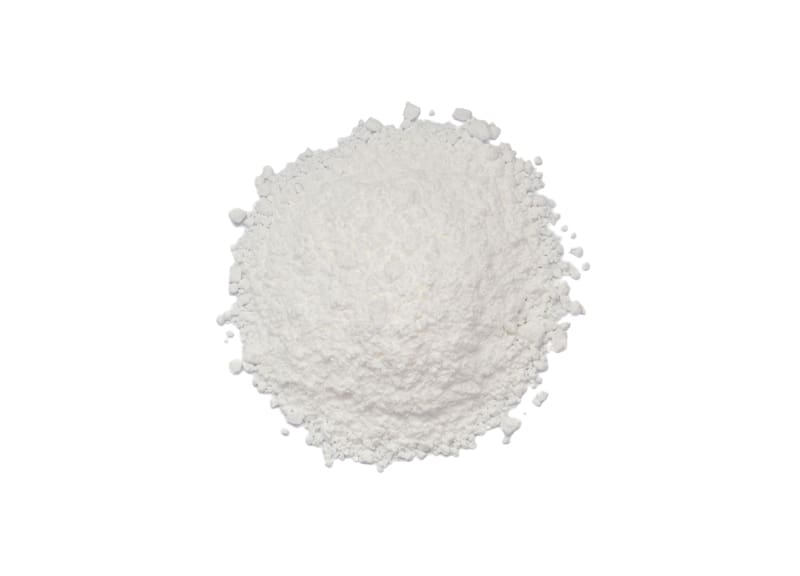
Calcium Supplement
Some cats will eat raw meat but refuse to eat raw meaty bones. In these instances a calcium carbonate, eggshell powder or bone meal supplement can be used as an alternative source of calcium in the raw diet. All of these options are appropriate for use with healthy adult cats. However, bone meal is nutritionally the best choice for kittens.
Nutritional Yeast is Recommended
Cats have very high requirements for B vitamins, particularly Thiamine (B1) and Riboflavin (B2). The raw transition plan is often lacking B vitamins due to it's bland composition. Therefore, the addition of nutritional yeast is highly recommended to provide sufficient B vitamins during the raw transition. Dosage is 1 teaspoon per 1000 Kcal, or roughly 19oz (538g) of raw food.
Calculate Ingredient Amounts
Step one is not intended or recommended to feed long-term.
The first step of the raw feeding transition is not nutritionally complete and should not be fed long-term. Proceed to step two once the cat has maintained firm and consistent stool for a minimum of three days on step one.
CLOSING COMMENTS
Step one of the raw feeding transition is designed to introduce cats to lean raw muscle meat, raw meaty bones, and nutritional yeast. Transitioning a cat to raw is exciting, but it is best to allow the cat to set the pace. Once stools are firm and consistent for three days, proceed to step two of the transition.
Lean White Muscle Meat
The foundation of step one is lean, white muscle meat. The recommended starting guideline is 94% muscle meat.
Raw Meaty Bones
Raw meaty bones or an alternative supplement should be included immediately in step one to help maintain firm stool. The recommended starting guideline is 6% bone. However, some cats may need as much as 10%.
Nutritional Yeast
Include 1 teaspoon of nutritional yeast per 19oz (538g or 1000 Kcal) of raw food to provide sufficient B vitamins during the raw transition.
